The humble Hen and chick is a beloved houseplant common in many indoor gardens. One of their downfalls is that they can be a bit finicky and require much attention to keep them healthy.
Therefore, knowing and understanding the signs of a hen and chick plant dying is essential for longevity.
In this article, we’ll discuss why your hen and chick plant may be struggling to survive. These include issues relating to insufficient sunlight, incorrect watering, temperature stress, and root rot.
These problems can present themselves via discolored and wilting leaves, yellowing between the foliage veins, stunted growth, and so on.
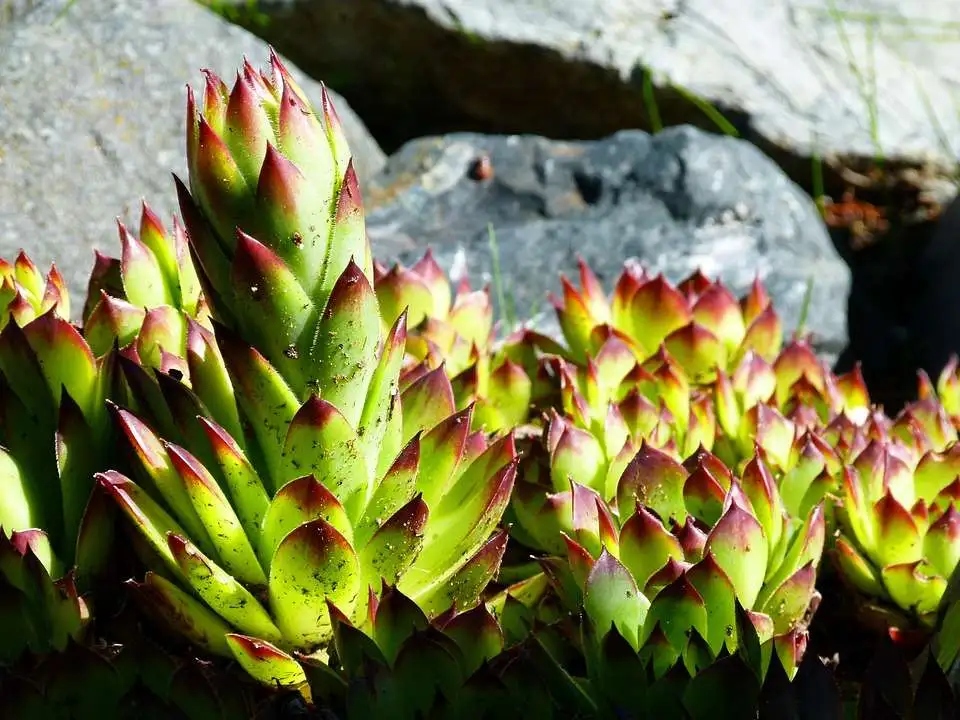
Aside from the detective work, we’ll also offer some foolproof solutions for preventing these issues. This way, you can enjoy your hen and chicks for years. Sound good? Let’s go!
Table of Contents
How long do hen and chick plants last?
The average lifespan of a hen and chick plant is between 2-5 years. However, with the type and amount of care, these resilient little houseplants can survive much longer. As the hen matures and then flowers in its second year, it produces cute little baby rosettes called chicks.
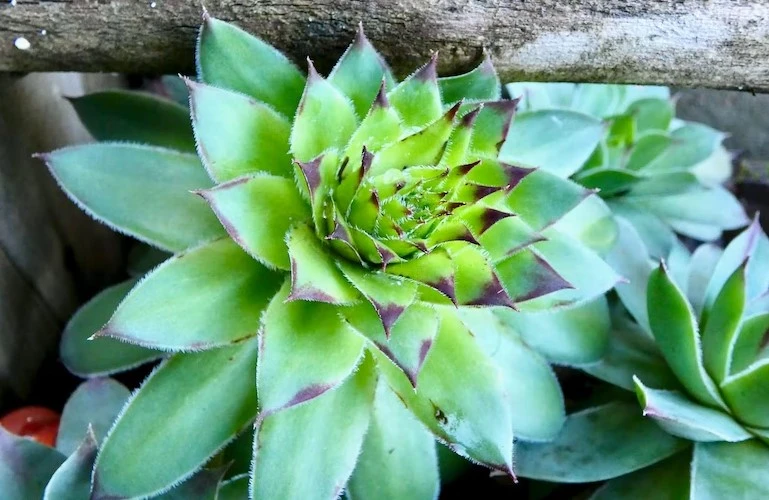
The chicks can be harvested when they reach around 3 inches wide and replanted somewhere else in your garden. Growing and harvesting like this can keep your hen and chick plant thriving for many years.
Sadly, all plants come to the end of their life cycle as they weaken due to age or lack of care. Knowing how to spot the signs of a dying hen and chick plant can help you get as much life out of these little cuties as possible!
Hen and Chick Plant Dying: Causes and Solutions
Hen and chick plants need that extra bit of attention to ensure that they stay happy and healthy. Without a routine maintenance schedule, they tend to suffer from a range of issues which can eventually lead to them dying.
Let’s look at all the different reasons for a hen and chick plant dying and how to correct them before it’s too late.
Incorrect Watering Schedule
Incorrect watering is one of the main reasons for hen and chick plants to die. Overwatering causes the rosettes to develop root rot, slowly killing them as the rot spreads from the roots up.
On the other hand, underwatering won’t allow them to absorb enough moisture to keep themselves alive, and they’ll eventually wither away.
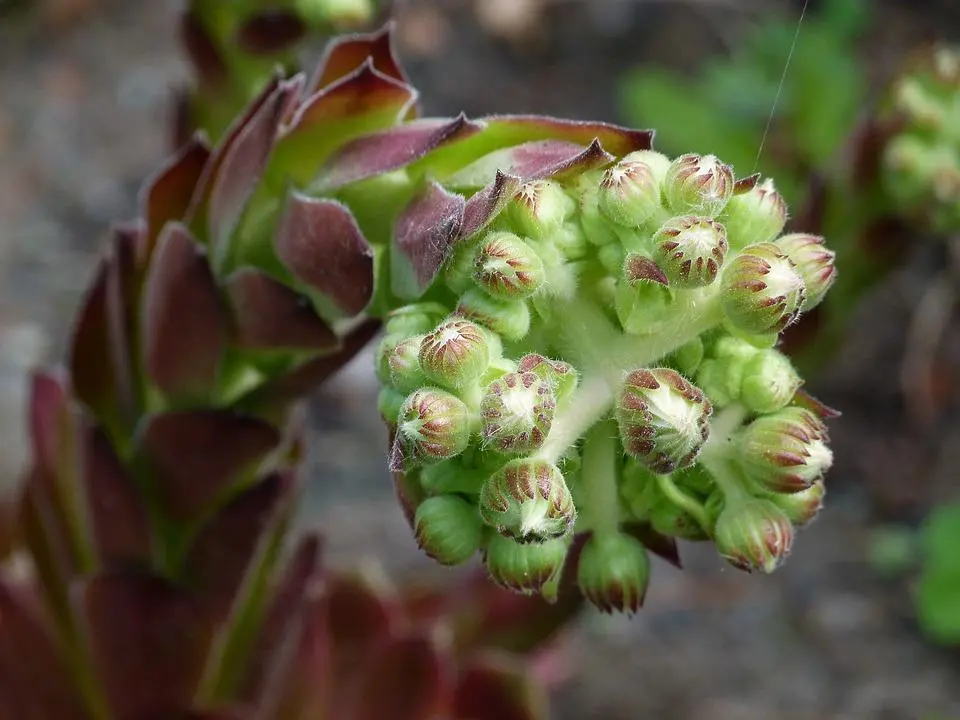
The best way to keep them healthy is by only watering them when the top inch of the soil starts to feel dry. Avoid flooding the soil as it will lead to disaster. Flooding usually occurs when there aren’t enough drainage points or when the soil is too compact and retains the moisture
What is The Right Watering Schedule?
Thoroughly soaking the soil until the water runs out of the drainage holes is the best method. Then let the soil drain out completely before re-watering. During warmer months, it’s vital to keep a close eye on the moisture levels of these plants. Give them water more regularly, as needed.
Pest and Disease
Pests and diseases can be a big problem for all plants, and the humble Hen and Chick are no different. Believe it or not, one of the biggest reasons for pests and diseases to latch on to one of these plants is poor soil preparation and overwatering.
When the soil is too compact and doesn’t allow drainage, the water pools under the soil and drowns the root system in this stagnant water.
Once the roots rot, a range of pests moves in on the decaying plant as they see it as a source of food. Once the pests have established themselves, the disease starts to set in due to their carnage.
Let’s look at the most common pests and diseases affecting Hen and Chick plants.

Pests
Hen and Chicks can be caused significant harm or even death if not quickly addressed. The most frequent threats include aphids, spider mites, and mealybugs.
- Aphids – These little armies are extremely hard to spot and do their damage by feeding on the sap of the leaves, resulting in discoloration.
- Spider mites – These pests are also microscopic. They cause havoc by weaving webs around your plant, leading to wilting foliage. As the plant weakens, they are much more susceptible to disease.
- Mealybugs – These pests are even more annoying for hen and chick plants and can lead to yellowing of the leaves and potential disease or much more harmful pest introduction if left untreated for too long.
Solution for Pests
- Aphids can be easily treated with insecticidal soap or neem oil spray. However, spotting the little troublemakers early will give your plants a better chance of avoiding widespread damage.
- Spider mites – Again, an insecticidal soap solution or neem oil spray is the best eradication method, although vigilance is key for prevention here too.
- Mealybugs – As with the other pests, an insecticidal soap solution or neem oil spray should take care of these as well, but again they need to be spotted early, and the solutions must be applied promptly for these treatments to truly work their magic!
Diseases
Common diseases that can kill a hen and chick plant include fungal leaf spots, bacterial blight, and powdery mildew. They do their damage by:
- Fungal leaf spot – This disease appears as circular spots on the plant leaves and is caused by high humidity in combination with warm temperatures.
- Bacterial blight – Another damaging disease that appears as dark circles or streaks on foliage and spreads quickly if left untreated. This pathogen can be caused by overwintering in crop residue and transmitted by infected seeds.
- Powdery Mildew – Lastly, powdery mildew is caused by high humidity and causes white patches to appear on leaves.
These diseases can eventually lead to death if discovered and corrected when first spotted. The best way to keep them from showing up is by keeping your hen and chick plants sheltered away from extreme weather conditions. Keep an eye on them for any signs of distress. This may include wilting leaves or discoloration.
Solution for Disease
All 3 of these common diseases can be treated by doing the following:
- First, remove any affected foliage as soon as you spot them. This is crucial to preventing the disease from spreading any further.
- Follow that up by decreasing the humidity around your plant. You should also try to increase air circulation around the plant by trimming back any excess foliage or simply moving it to an area with better ventilation.
- If the problem persists, neem oil can be applied directly to the infected areas to help treat the disease.
- Lastly, always being on the lookout and taking swift action when problems appear is key to preventing these diseases from causing irreparable damage!
Poor Soil Drainage
As mentioned, inadequate drainage can spell disaster for a hen and chick plant. Poor drainage will ensure the roots are surrounded by water instead of valuable, life-bringing oxygen. As a result, the roots will become suffocated and form mold or ‘rot’. Plants need to be able to utilize oxygen to process photosynthesis.
They also need adequate aeration to ensure they can respire. Any build-up of moisture will effectively form a bath underneath the soil. The roots will sit in this stagnant water and rot as time progresses.
Once the rot sets in, it can easily spread up through the plant and kill it. If left unchecked, this will cause symptoms such as yellowing leaves, stunted growth, and eventual death.
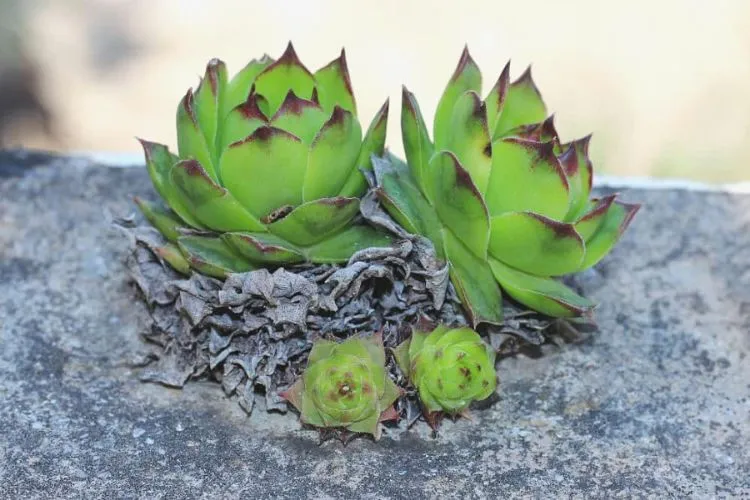
How To Improve Soil Drainage?
Improving soil drainage for hen and chick plants is essential to keeping them alive. Let’s look at how to improve the soil.
- The first step is ensuring the soil isn’t too compacted. Compacted soil prevents water from draining away properly. If the soil is tightly packed, use a garden fork or tiller to loosen it up. You can add some organic materials like compost or peat moss to help amend it by creating air pockets. This aeration solution will help keep moisture away from the root system but still give it access to vital nutrients and oxygen.
- Additionally, mulching can be a great way to improve water drainage. The water will sit around the top of the plant within the mulch instead of soaking deep into the root system. It can be utilized as more of a slow-release moisture source. Not only that, but it can also help protect them from harsh weather conditions.
- Finally, ensure that you always adjust the amount of moisture given based on how much rain has fallen in a given week. This will ensure that the soil doesn’t become soaked unnecessarily.
By following these steps, you can improve the soil drainage of your hen and chick plants and have healthier, happier plants!
Poor Nutrients
Poor nutrient levels are another large factor that a hen and chick plant can die, especially when the problem exists for a long time. Without access to necessary nutrients, the plant will start to grow at a much slower rate and grow with much less vigor.
It’s common for growers to prepare a container or garden bed with materials that either have too much or too little of a certain nutrient. When they add their plant to the growing area, they follow up with a fertilizer that amends the soil balance without knowing.
This imbalance can eventually lead to the yellowing of leaves, wilting, and even death if not addressed when first spotted.
Ensuring that your hen and chick plants receive the correct minerals is extremely important. This includes the right amounts of “the base 3” (nitrogen, phosphorus, and potassium) and any other required nutrients for each plant.
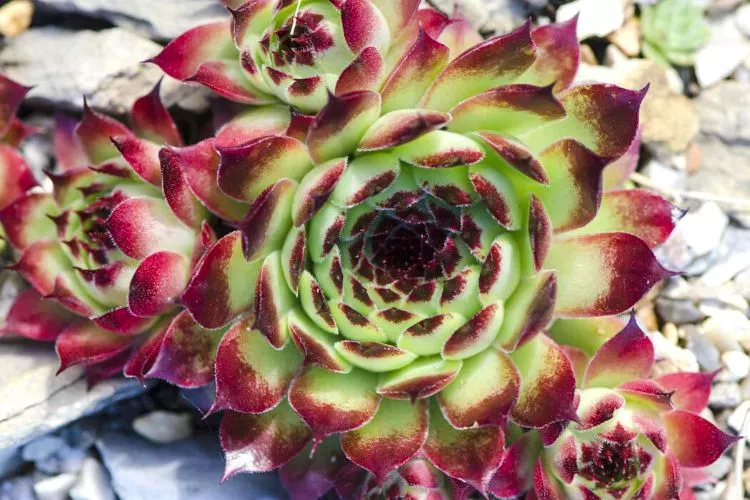
How To Maintain Nutrients for Hen and Chick Plants?
The simplest way to maintain nutrients within your plant’s growing medium is by taking these simple steps:
- Always take a soil sample to your local extension office to identify which nutrients are lacking before planting anything. This way, you can decide which nutrients should be added to amend the soil’s overall value.
- Following that up by adding compost or mulch to the soil can help improve its moisture retention and increase the availability of these vital nutrients for your plants.
- Maintain proper fertilizing techniques to ensure that your plants get all the necessary nutrients for optimum health – saving them from an untimely death!
Humidity
High humidity levels can also cause huge problems for hen and chick plants. Even though they usually thrive in areas with adequate moisture, too much humidity can quickly drown them out by saturating them with too much water.
As a result, the plant’s root system becomes overly damp and prone to rot. The rotting leads to wilting and discoloration of leaves, poor growth, and eventually death if left untreated.
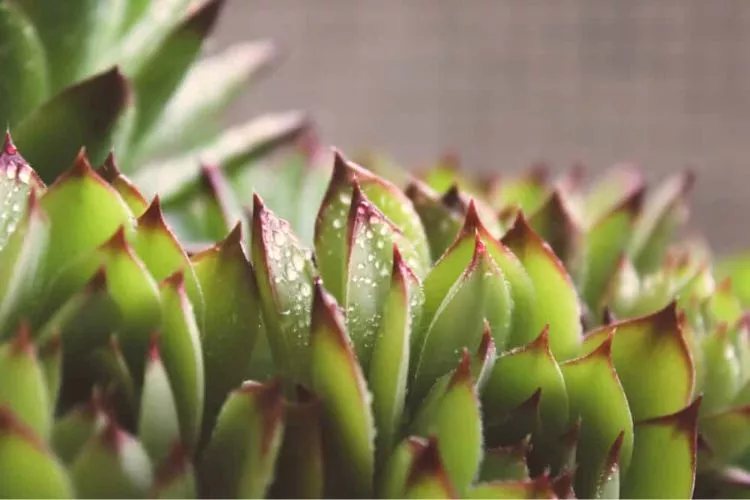
What Is The Perfect Humidity for Hen and Chick Plants?
The optimal humidity level for hen and chick plants is between 40%-60%. To avoid humidity issues altogether:
- Ensure your hen and chick plants are placed in an area that perfectly balances sunlight and shade.
- If you notice that the air is especially humid, try installing a dehumidifier near your plant or even misting it with water occasionally.
- Use lukewarm water sparingly when watering and ensure that excess moisture is drained immediately after every session.
By following these simple guidelines, you’ll ensure that your hen and chick plants get the optimal moisture level without exposing them to high humidity levels. This will go a long way to preventing early death!
How do you save a dying hen and chick?
If you’ve noticed that your hen and chick plant is looking a bit worse for wear, don’t worry – there are steps to nurse it back to health! With the right combination of temperature, humidity, and sunlight, these resilient plants can be brought back from the brink. Let’s have a look at all the common aspects in detail.
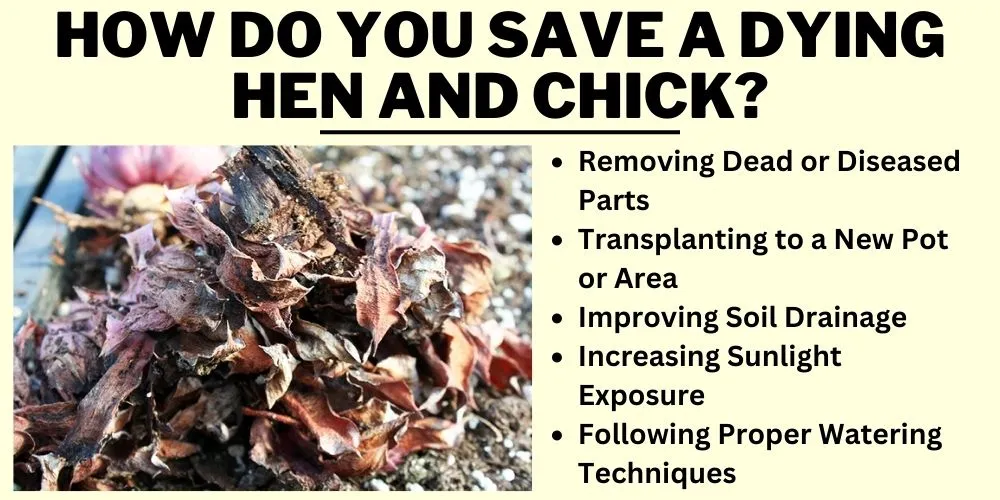
Removing Dead or Diseased Parts
Removing decaying, dead, or diseased parts of a hen and chick plant is an important step to help save it from dying. Check the leaves or stems out for small dark spots. These could be signs of disease or pests, so removing them as soon as possible is best.
This should be done with clean, sterilized gardening shears or scissors. It’s also a good idea to remove any dead flowers to prevent them from taking nutrients away from other parts of the plant. This way, the plant can focus its energy on new, fresh growth.
Transplanting to a New Pot or Area
Transplanting to a new pot or area is another effective way to save a hen and chick plant from dying. Move it somewhere that provides enough sunlight and the right amount of exposure to moisture for optimal growth.
When it comes to transplanting, ensure the roots are not disturbed and that the new soil is prepared with a well-draining material. Lastly, always water the newly relocated plant to avoid shock.
Improving Soil Drainage
Improving soil drainage is one of the most crucial steps. You’ll need to make sure there are no areas around the roots that are sitting with water. The best way to do so is by pulling the plant out of its growing container and doing some investigating.
If the roots are sitting in water, consider amending the soil with additional drainage materials like sand or gravel, especially in the base of the container.
You can also incorporate organic matter, such as compost which will help create more air pockets for better drainage. Get this step right, and some of the biggest problems can be averted.
Increasing Sunlight Exposure
Increasing the amount of sunlight exposure can also help save a hen and chick plant from dying. Place them in a sunny but sheltered spot in your garden or patio. Ensure it’s somewhere that gets at least 4-6 hours of direct sunlight daily.
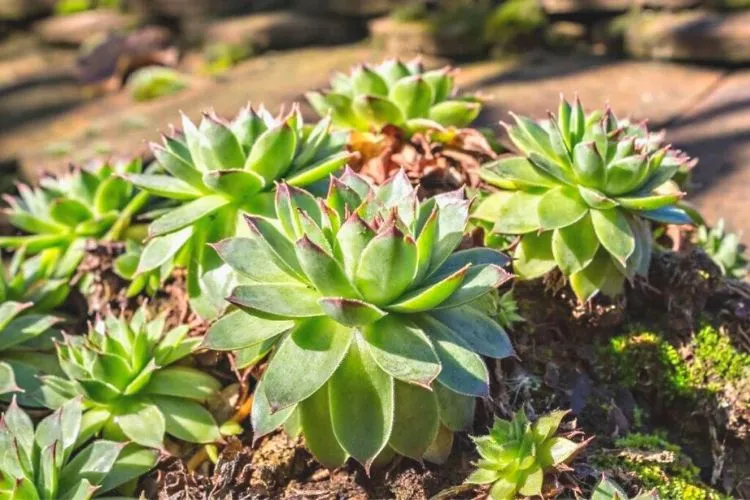
If you live in an area with limited sunlight, consider using supplementary lights such as artificial grow lights. If you choose to go down this path, ensure you’re not overwhelming the plant by starting slowly and gradually adding more light over time. They will need to become accustomed to the new light source.
Following Proper Watering Techniques
Water your plants regularly but don’t overdo it, as they are susceptible to root rot. Avoid watering the foliage directly, as this could cause the leaves to develop fungal diseases. Instead, water is at the base of the plant to stay on the safe side.
To check if your plant needs water, lightly press down on the soil with your hand or stick your finger into the ground about an inch deep – if it’s dry, then it’s time to water! If it’s still slightly moist, wait until it dries out the check again.
Preventing Hen and Chick Plant Death
Two of the simplest ways to keep your hen and chick plant from dying are with appropriate pest and disease management. These 2 factors will fast-track an unnecessary death if left unattended. Let’s have a look at how this can be achieved.
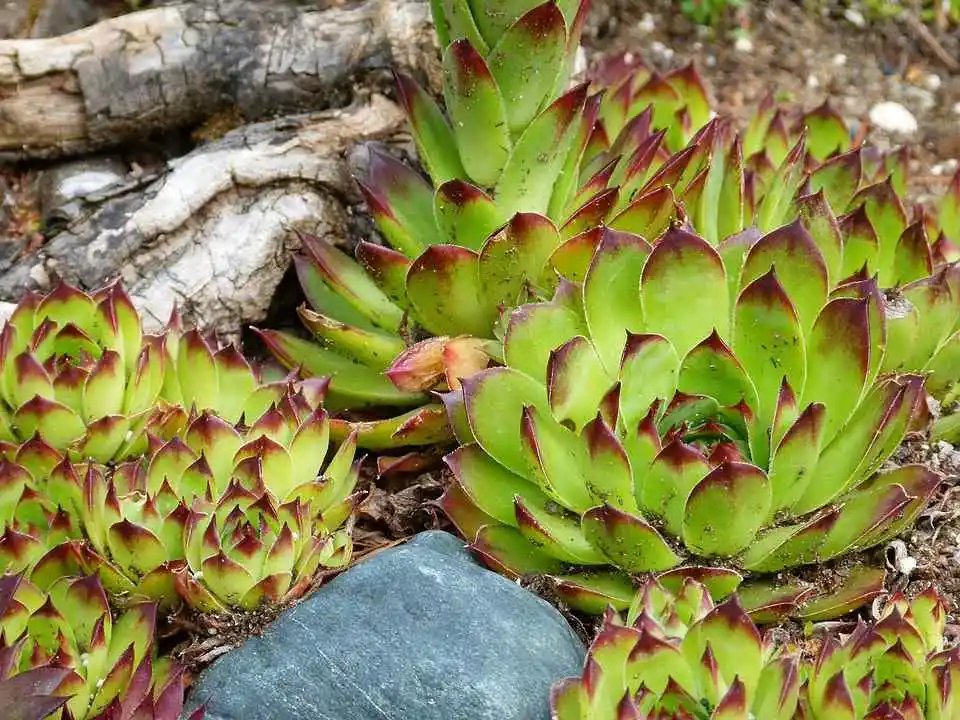
Pest Management
The best way to avoid an unwanted pest attack is by being vigilant. Keep an eye out for insects like aphids, slugs, and snails, as these can damage your plant’s foliage. If you notice any signs of infestation, treat them with a pesticide specifically designed for the type of pest you have identified.
Additionally, try to keep weeds away from the base of the plant. The weeds can act as a hiding place or access point for some pests. They are also known for competing with the plant for nutrients, so ridding them once spotted is well worth the trouble. With good pest control measures, you can ensure that your hen and chick plants remain healthy and vibrant!
Regular Inspection for Diseases
As with pests, regular inspection for diseases is essential to preventing a hen and chick plant from dying. Be on guard for any discolored or wilted foliage, as this could be a sign of disease.
Check the undersides of leaves for signs of fungal growth, such as white powdery spots, yellow or brown splotches, and black sooty marks. Remove any diseased plant material immediately and treat it with an appropriate fungicide if necessary.
Symptoms of Dying Hen and Chick Plant
When a hen and chick plant becomes stressed, it will tell you about it by showing the following visual signs. Spotting them early and acting fast will ensure they have the best chance at survival.
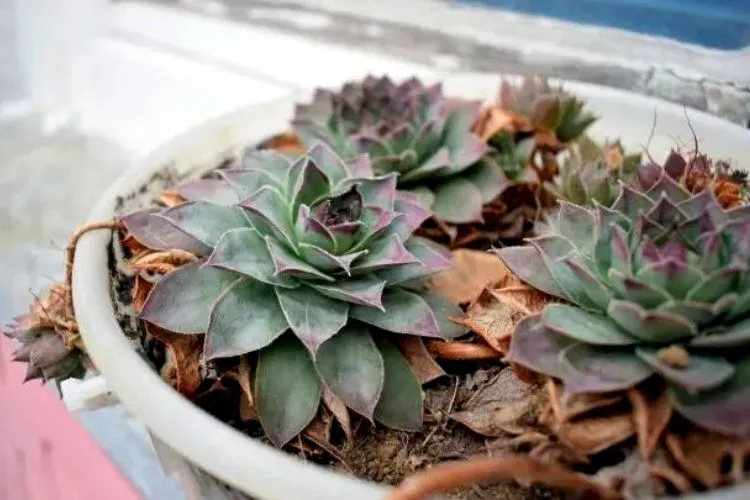
Yellowing of Leaves
The leaves of a hen and chick plant can turn yellow for several reasons. These include inadequate water, too much sun, nutrient deficiency, pests, and/or diseases. It’s important to identify the cause of this yellowing as soon as possible so that you can take steps to correct it.
Check the soil moisture levels, sunlight exposure, and fertilizer if needed. Inspect the plant for signs of pests or disease and treat accordingly.
Wilting
Wilting of a hen and chick plant can be caused by dry soil, excessive heat or cold, nutritional deficiencies, pests, and/or diseases. Check out the moisture levels in the soil and adjust if needed.
Monitor the plant’s environment for fast, hard temperature swings that could be causing this type of stress. With timely diagnosis and proper treatment, you can help ensure your hen and chick plants stay healthy!
Stunted Growth
The stunted growth of a hen and chick plant can be caused by several issues, such as inadequate light, nutrient deficiencies, or too much water. Check for sources of shade that could be limiting sunlight exposure.
Monitor the soil moisture levels and adjust them if needed. If necessary, even add some fertilizer to correct any nutrient deficiencies. Check back to see if the symptoms have subsided, and be vigilant.
Soft or mushy stems
Soft or mushy stems of a hen and chick plant can be caused by overwatering, excessive heat or cold, or fungal diseases. Check the soil moisture levels and amend the soil and container if needed.
Keep an eye on the plant’s environment for any swings or temperature extremes that could be causing stress.
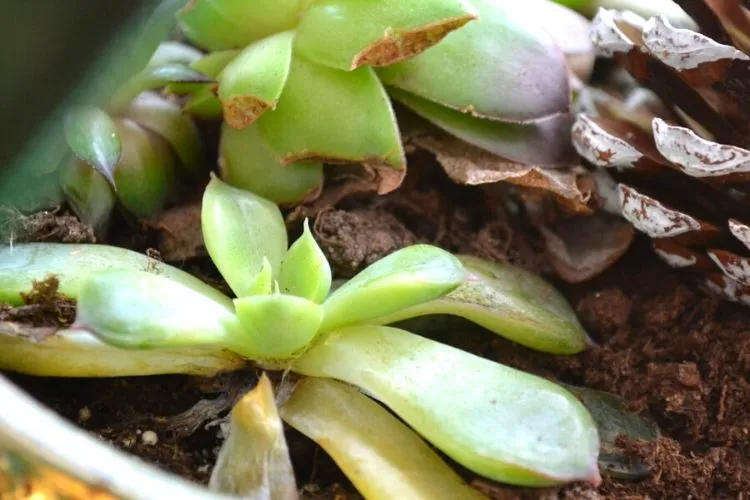
Be on the lookout for fungal diseases such as discolored stems, wilting leaves, or soft areas on the stem. A soft or mushy stem can mean that the plant has suffered for quite some time, so act fast!
Presence of mold or fungus
Mold or fungus on a hen and chick plant can be caused by excessive moisture, poor air circulation, too much shade, or even nutrient deficiencies. Check for dead sun spots that may prevent the plants’ access to the sun. Check on the soil moisture levels and adjust if needed.
If necessary, add fertilizer to correct any nutrient deficiencies. Ensure the plant gets enough air circulation so that water droplets don’t just sit on the foliage! You may need to move them around or even separate any that are growing too close to each other.
Frequently Asked Questions (FAQs)
What do you do with hen and chick plants in the winter?
Move them indoors during winter to stay warm and protected from harsh weather conditions. Place them in a bright spot with plenty of indirect sunlight. Water it regularly, but don’t overwater as this can cause root rot.
Do hen and chick plants like full sun?
Hen and chick plants thrive in bright, indirect sunlight. Filtered or dappled light is ideal. Too much direct sunlight causes sunburn, leading to discolored patches on the rosettes.
Do hen and chick plants multiply?
Yes, hen and chick plants are known to multiply over time. Each rosette produces offshoots or “chicks” during its lifetime. When the mother plant dies, her chicks can be divided into individual plants and replanted. These chicks can then grow into full-sized hen and chick plants if provided with the right conditions.
Conclusion:
In conclusion, hen and chick plants can be an easy and rewarding addition to any garden. However, it is important to be aware of the different causes of death to keep your plant healthy.
Poor soil preparation and Incorrect watering are the primary reasons for the death of hen and chick plants. Therefore, preparing the soil with adequate drainage and aeration is essential.
Watering should only happen when the top inch of soil feels dry. Only then can the soil be thoroughly soaked until the water runs out of the drainage holes.
With proper care and attention, you can enjoy a thriving hen and chick plant for many years! We hope that this guide has been helpful.


